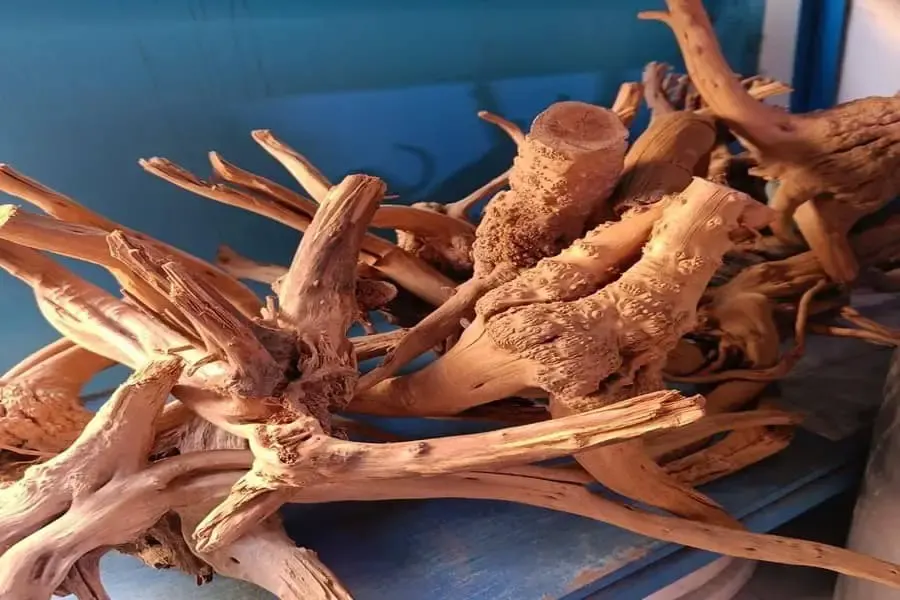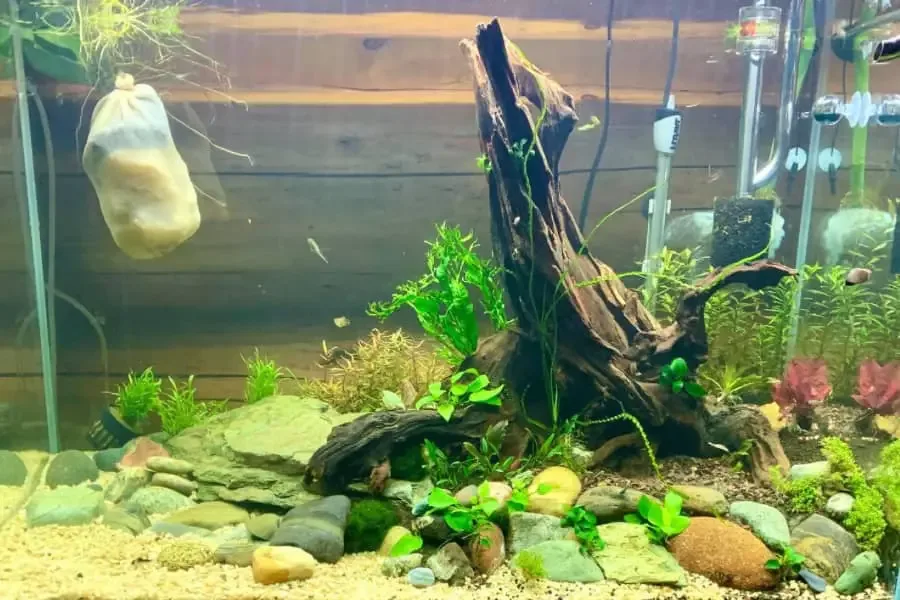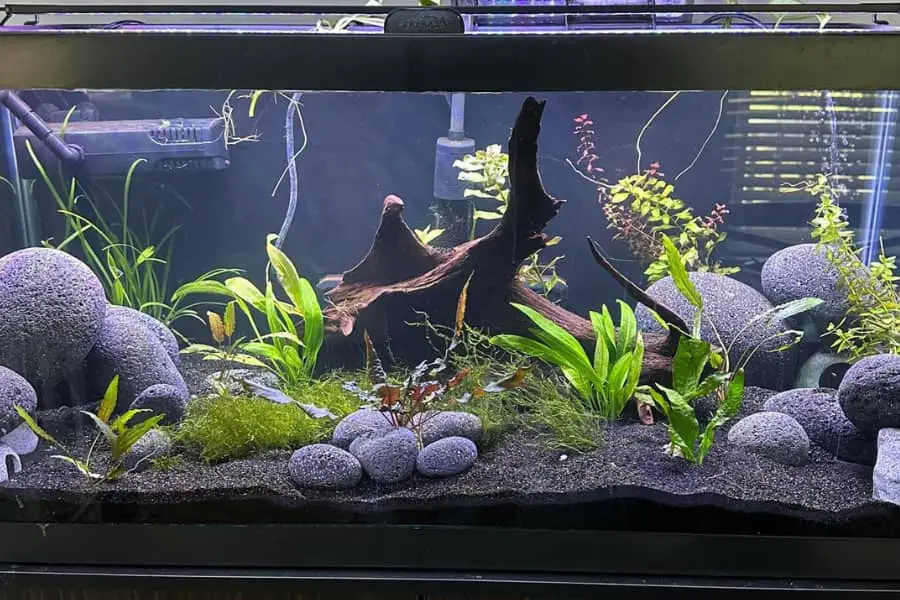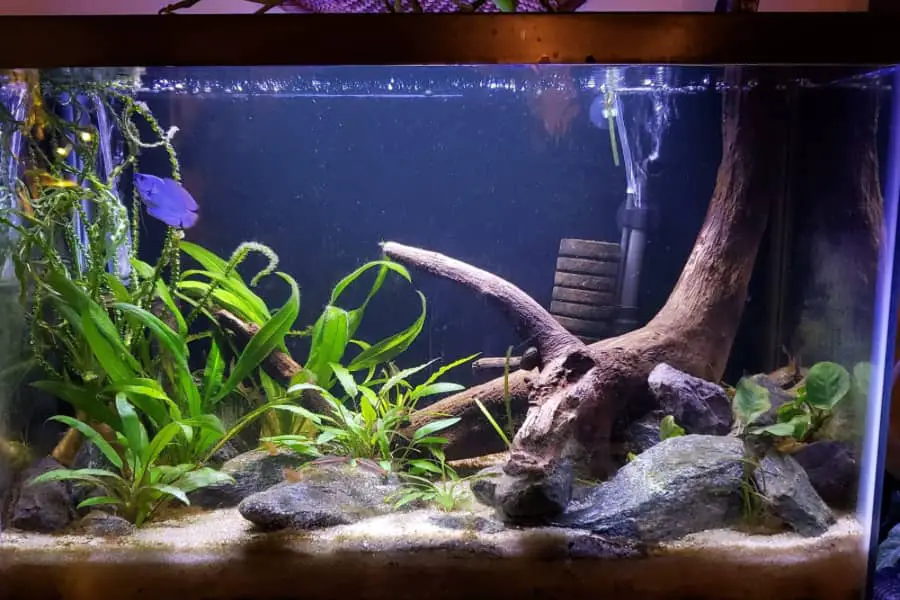This post may contain affiliate links.
Incorporating driftwood not only adds aesthetic qualities to aquariums but also provides secluded spaces for fish to hide, spawn, and breed in. With driftwood, you can create an environment closer to the natural habitat.
If you are wondering what’s the best way to choose driftwood for aquariums, here you go.
How To Select The Perfect Driftwood For Aquariums?

The first thing you do is, get inspiration for the layout you want for your aquarium. On the internet, you can find different design layouts. The list is truly endless if you use your imagination. Getting the right size of wood is the most important of all. You want driftwood that adequately fits in proportion to your tank size.
Once you have your hands on the driftwood of your choice, take your time to work on its positioning and orientation.
There are no hard and fast rules for choosing driftwood for an aquascape. Remember, beauty lies in the eyes of the beholder. If a particular piece of wood or two, arranged in a certain way, looks perfect to your eyes, you have found the best driftwood for your aquarium.
Best Types of Driftwood
There are 73,700 tree species globally, so you can imagine the types of driftwood there exist. However, some driftwoods are more popular than others. It’s due to their shapes, color, texture, or branching pattern.
Every driftwood is unique in itself. You may find similar pieces, but you can’t find the same. Following are some commonly used driftwood types that are indeed collection worthy:
- Malaysian Driftwood
- Mopani Wood
- American Driftwood
- Cholla Wood
- Bogwood
- Manzanita
- Bonsai Driftwood
- Spider Driftwood
- Tiger Wood
- Mesquite
Where To Get Driftwood?
When you buy driftwood from a store, rest assured that the material is safe. All it requires is sterilization and is ready to be submerged.
But when you collect the wood from nature, you must ensure it is aquarium-safe. Because you have no idea where it came from and the conditions it’s been exposed to.
Buy from a store
Driftwood of all shapes and sizes is readily available at local aquarium shops, craft and hobby shops, florists, souvenir shops, and flea markets.
You can order driftwood online from Etsy, eBay, Amazon, and many other online stores.
Driftwoods can get fairly expensive, especially when shipping is included. The big and heavy your driftwood is, the more shipping cost you’ve to pay. Some more exotic and harder-to-acquire pieces can drive the price up even further.
Get it for free from nature
If you don’t want to spend money on driftwood, go out in nature and collect for free.
Driftwood can be found along beaches, streams, on riverbanks, or at the edges of lakes. Visiting water bodies after a rainstorm significantly increases your chances of finding driftwood.
If you don’t have access to water bodies, make a visit to nearby forests or woody areas. Wherever there are trees, there are pieces of dead wood to be found.
Can I Use Any Wood as Driftwood in Aquarium?

No, you should not take any wood and place it in your aquarium.
Following is a list of the trees that are toxic for fish. Not to say, driftwood from these trees remains poisonous and can’t be rendered safe by time, soaking, or other methods. But if you aren’t an expert, we advise you to avoid these problematic trees.
Wood to avoid:
- Cedars
- Hemlock
- Cherry
- Walnut
- Yew
- Cashews
- Sassafras
- Poplar
- Douglas fir
- Bitter almond
- Rosewood
- Ironwood
- Fresh oak tress – oak that has newly dropped pitch or sap coming from it
- Teak
- Brazilwood
- Chestnuts of all sorts
- Grape vine
- Olive wood
- Australian cypress
- Mahogany
- Ebony
- Milky mangrove
- Lilac
- Ivy
- Pine
- Spruce
- Any citrus trees
Things to Keep In Mind When Collecting Aquarium Wood Locally
If you have decided to go on a driftwood hunt, there are some rules you must follow to ensure you get home with aquarium-safe driftwood.
- Wood from a long-fallen, dead tree is safe to use regardless of the tree it comes from. A dead piece of wood contains no aroma, is entirely leeched of oil and moisture, and has no traces of pitch or sap.
- Prioritize picking up driftwood from running water instead of a stagnant water body. The latter increases your chances of bringing algae, parasites, or other aquatic hitchhikers home.
- Always go for hardwood and avoid softwood because it contains too much sap and isn’t sturdy. Try scratching with your fingernails or using a knife to determine whether it’s softwood or hardwood.
- Hollow wood makes the best aquarium driftwood as it provides hiding spaces for the fish and is easy to sink.
- Avoid wood covered in molds, fungi, mushrooms, or moss.
- Stay away from burned wood and one that has holes in it.
- Avoid rotting wood.
- Pieces of wood with no barks are more favorable.
- Root structures of dead trees often have the coolest shape to be incorporated as driftwood for aquariums.
Always bring a hand saw when venturing out to find the perfect driftwood for your aquarium. You are going to need it.
How to Properly Clean Driftwood for Aquarium Use?

Driftwood collected from the wild requires adequate cleaning and sterilization before it can be used.
The piece of wood that looks clean on the surface might be housing nasty microorganisms that, if left untreated, will infect your aquarium.
Clean your Driftwood
The first step is to remove all the dust and dirt attached to the piece of wood. For that, you can give it a good scrub and rinse it thoroughly.
You can use hot water for this process but never use soap, detergent, or any other chemical cleaners.
If you see any sharp edges on your wood, it’s a must to smoothen them using sandpaper.
Perform Sterilization
For sterilization, boil the wood for 15-20 minutes or soak it in a 1 in 9 ratio of bleach-to-water solution for about half an hour. After that, you can leave the driftwood under the sun for a couple of days.
Boiling driftwood is the fastest way to extract tannins and make it waterlogged. However, keep in mind the boiling time depends on the size of the wood. Some larger and dense pieces may even require 1-2 hours of boiling to be fully sterilized.
All this process, from cleaning to sterilization to sun drying, should kill the bacteria, fungus, algae, or anything else that might have hitchhiked on the wood.
This should be enough to make the driftwood aquarium safe. However, some aquarists don’t stop here and go the extra mile and test the wood to ensure the safety of their fish.
They would submerge the wood in a separate container and let it soak for a week. Then test the water for pH, nitrites, and nitrates and compare the before and after results.
If anything comes out as odd or the water chemistry is significantly affected, know the driftwood isn’t suitable to be placed in an aquarium.
How to sink floating driftwood?

Some driftwood quickly sinks in the water and remains submerged, while some aren’t dense enough to do so, so they float.
To make a driftwood sink, apply weight, keeping the wood submerged until it gets waterlogged. The amount of time a driftwood may take to get waterlogged depends on its size and the type of wood it comes from.
Some pieces of wood can be so stubborn that they may take weeks and months to reach complete saturation.
The fastest way to make driftwood waterlogged is to boil it. Some more porous woods may take 1-2 hours of boiling time to lose buoyancy. While some hardwoods can take up to 10 hours before they soak up enough water to sink.
If you have tried everything, but your driftwood refuses to stay down, your last option is to glue it on the bottom, screw the wood on a slate, or anchor it using heavy decor items on the tank.
To learn more about to make floating driftwood sink in the aquarium, please read my previous article.
Related Questions
Does driftwood lower aquarium pH?
Yes, driftwood releases tannins in the water column, which reduces the tank’s pH.
How to get rid of brown water caused by driftwood?
The brown water is the tannins-effect, which can be reduced by partial water changes and/or adding carbon to the filter. You can also boil the wood until it loses most of the tannins.
Is it illegal to take driftwood from beaches and parks?
It’s not illegal to collect driftwood from nature as long as it’s not a private-owned property or conservation area that prohibits such activities. In some places, you may require prior permission to collect driftwood, so make sure to enquire about the rules before heading out on the adventure.
Which wood are aquarium-safe?
Alder, Apple, Beech, Birch, Cherry, Hawthorn, Heather, Oak, Pear, Sycamore, and more.
Conclusion
There are no hard and fast rules for choosing driftwood for aquariums.
The process is simple: have some inspiration for the kind the layout your want for your aquarium, get your hands on the pieces of wood that promise the design you have on your mind, treat them properly, work on positioning, and there you have it, your dream setup.
